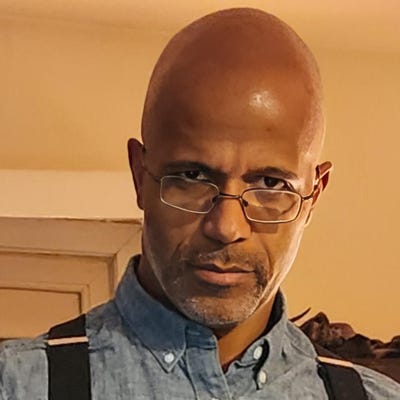Paramount CTO on Shedding Legacy Systems for General Compute
Phil Wiser, at a tech showcase hosted by Verizon Business, said such shifts help to move more quickly.

On Wednesday night, Verizon Business brought journalists, customers, and partners to Radio City Music Hall in New York for a look at how its technology is being used -- including a chat with media conglomerate Paramount Global.
After an evening that included demos of wireless communications systems used by coaches in the NFL and hologram comms for meetings, Daniel Lawson, senior vice president of global solutions, Verizon Business conducted the chat with Phil Wiser, CTO for Paramount.
Wiser said in his role, and with the teams he oversees, he has a complete view of Paramount’s business -- from producing content and releases through its streaming services as well as through partners.
“That continuity is a key part of then looking at how is technology really going to move the business forward,” he said. “Not just applying the latest technology, but really understanding where we're going to leverage from that to shift their business as we’re adapting to new disruptions in the market.”
Riding the Disruption
Lawson pointed out that market disruptions include consumer preference, the technology that enables it, the way content is created, and the mediums the public views content. That makes it tricky to build a strategy around a moving target.
“It’s a real focus on agility,” Wiser said in response. “Implementing that in such a diverse company -- put in perspective, CBS is part of our company. So, we have big, giant antennas broadcasting RF covering a big part of the country, as well as delivering out to mobile devices.”
That diverse range of functions required a different strategy, he said. “When we merged CBS and Viacom around four years ago, 2020, we made a stated move to general purpose compute,” Wiser said. In broadcast media, he said, there are often custom hardware and application-specific solutions. “General purpose compute lets us run everything over general IP networks as much as we possibly can and that push, which is not trivial, has enabled us to sort of adapt to new things.”
Change may come soon to Paramount. It has a merger deal on the table with Skydance Media but Shari Redstone, Paramount’s non-executive chair, has yet to approve -- and other bidders have allegedly entered the fray. Like some other media companies, Paramount has sought to make its streaming service thrive, but not without some shakeups. Wiser pointed to technology playing a role in how the company aims to adapt to the market and consumer interests.
“As we’re seeing the streaming market shift and we’re looking at new things that can impact how we’re creating, producing content, we’ve got much more flexibility than we did five years ago,” he said.
Delivering a personalized yet consistent experience to consumers across the different platforms they may use, is part of competing in the streaming world, Lawson said, and then asked how Paramount built a multiplatform delivery model to gain an advantage.
“We recognized that we need a unified view of the supply chain,” Wiser said, “because we are producing tens of thousands of assets. We need to get them out to a billion-plus consumers on a regular basis. We can’t do that on piecemeal legacy systems, so we started from how we build. We build with very modern, cloud-based internet architectures.”
Getting out of as much legacy, custom-built software as possible helped free things up, he said. “We tried to make our technologies as disposable as we can, so we can move on very quickly,” Wiser said.
Tooling Up Production with GenAI
Later, the discussion turned to generative AI (GenAI), which Wiser has been vocal about its potential impact. “When I look at the megatrends of technology, it’s equivalent to the disruption of the internet to media,” he said. One way GenAI can play a role in content creation and distribution is to speed up its release to customers across varied geographies around the world within a few days. “It’s really challenging to do all the localization, the dubbing, even the compliance in that model and we really can’t do it,” Wiser said. “Now, applying AI we can use the original actors’ voices and have them speak every language that we need.”
About the Author
You May Also Like






